History of the Incorporated Trades
History of the Trades
On the 3rd of July 1646 the Town Council of the Burgh of Irvine “Granted” to the seven craft guilds of the town, the Seal of Cause . It gave the guilds the right to elect from within their Craft a “wise man” to be Deacon, to incorporate, to elect a Boxmaster ( later called the Collector ), a Clerk who with seven Deacons would be the Convener’s Court .
With the Charter came the right and privilege to manufacture and sell goods within the town boundaries. The Incorporation had the right to try all made work by journeymen from within the town and those who came to work from outside the town. No one could, without permission of the Incorporation, manufacture and sell goods in the town.
The Convener’s Court was and is by the consent of the seven Crafts, the regulating body of the Incorporation, with powers to enact rules and regulations for the members of the crafts and to set and collect fines and dues from transgressors. Some regulations were for the better behavior in and around the trades loft in the Irvine Old Parish Church , such as: –
October 11th 1726 - None of the members of this court shall come to the fore sate of the loft but shall have hats and that under the penalties of five shillings sterling, TOTIUS QUOTIUS.
Thomas Biggart (convener) & John Bryson (clerk)
With the rights and privileges “granted” to the seven crafts, the Smiths, the Weavers , the Tailors , Cordiners , Skinners , Wright craft and the Coopers , also came obligations to help and assist widows, bairns, waifs and strays, the auld, aged, the decrepit (the writer qualifies in at least two counts) and those craftsmen less fortunate who fell on hard times.
In 1791 the first Statistical Account of Irvine was published. The membership of the trades was listed as follows: Weavers 116 , Tailors 27 , Shoemakers 56 , Smiths 24 , Wrights 80 , Coopers 7 . The Skinners had been disbanded and so were no longer listed.
In 1846 an act of Parliament abolished exclusive rights and trading privileges of trade guilds and Incorporations throughout Scotland. Those people in Irvine who as ordinary craft members or convener’s court members who kept alive the sense of community, the traditions and obligations of the Incorporation must be applauded when so many trades houses in Scotland fell away and so much was lost.
The work of the trades and Convener's Court today is summed up in an old Minute book "The 16 of January 1746 the convener hath given a poor man ten shillings sterling."
The Seal of Cause
The Pies
In and around Irvine during the month of September people hear talk of ‘going to the Wee Pie and the Big Pie’, which may sound like some strange ritual. However, again both are associated with the ongoing life and traditions of the Incorporation.
Michaelmas (Feast day of Michael the Archangel on 29th September) was and still is a significant date in the calendar. It was the date when all accounts had to settled, it was the end of the business year and when apprentices were assessed. It still is a date in the judicial and academic calendars.
****************************************************************
The “Wee Pies” are the annual general business meetings of the seven Crafts. They are held on Michaelmas if it falls on Monday or on the first Monday after Michaelmas.
After the business, which includes election of office bearers and the representatives to the master court, each Craft normally has a meal and refreshments followed by social harmony, with Craftsmen telling humorous stories, singing songs and providing others forms of musical entertainment. In recent years, Crafts have invited guest speakers from various fields.
As a matter of courtesy the “Big Three”, the Deacon Convenor, the Collector and the Clerk, visit each Wee Pie to acknowledge the work of the Craft throughout the year and review its plans for the future.
The Wrights and Squaremen are the only exception to this practice, this Craft’s constitution states that the annual meetings are held on the first Tuesday (the business meeting) after the first Monday after Michaelmas and then the following Monday (the social meeting). The Tuesday meeting was introduced as it was more practical since the first Monday in October was a traditional local trades holiday.
****************************************************************
The Michaelmas Court meeting is the A.G.M. of the master court of the Incorporation and is held on the Wednesday after the Wee Pies. The four elected members of each Craft are eligible to attend along with the Deacon Convenor, Collector, Clerk, Late Convenor and Ex Convenors.
This is the traditional meeting where all important formal business of the Incorporation is carried out, including introduction of representatives from each Craft to the Convenor’s Court, payment of each Craft’s levy to the court and Annual Election of the Deacon Convenor, Collector and Clerk and acknowledgement of the Late Convenor.
It has become the practice for the Deacon Convenor to hold monthly committee meetings to plan and organise the day to day business of the Incorporation including all the charity fund raising events, however, the Michaelmas meeting remains the official formal meeting of the master court.
*******************************************************************
The “Big Pie” is an evening where all Crafts come together to hold an annual celebration, usually in October about a fortnight after the Michaelmass Court meeting.
Tradition has it that, to mark his elevation to office, the Deacon Convenor used to provide a large steak pie for the Craftsmen, hence the name and of course the Wee Pies are smaller version of this event.
In recent times the Big Pie has become a prestigious formal dinner with prominent speakers and guests from the fields of politics, industry, commerce, education and of course from other Trades Houses throughout the country.
Confusingly, a small token individual pie is often eaten at the Big Pie whilst a rather larger version is eaten at the Wee Pies. So at the Big Pie you eat a wee pie and at the Wee Pie you eat a big pie!!
The Burgh Shilling
The reason this particular design on the shilling was introduced into the British currency by George VI (reigned 1937-1952)was to pay tribute to the Scottish ancestry of Elizabeth, his Queen (later the Queen Mother) who was of Scottish descent, being the daughter of the 14th Earl of Strathmore and Kinghorne.  The shillings which were issued between 1937 and 1951 all depict the the forward facing lion of the King of Scots which formed part of the Royal Coat of Arms of Scotland.
The shillings which were issued between 1937 and 1951 all depict the the forward facing lion of the King of Scots which formed part of the Royal Coat of Arms of Scotland.
As it happens this same crowned lion, holding the Sceptre and Sword of State and wearing the Crown of Scotland, is the crest of the Royal Burgh of Irvine.The right to use the Royal crest is said to have been granted to the citizens of Irvine by King Robert I (the Bruce) because of special services they had rendered him.
Therefore, in Irvine, this shilling has been known for over 70 years as the Burgh Shilling.
In 1946 the British government had to pay back to the United States of America the war loan which, in order to make the payment, resulted in all British silver coins being smelted down. Following that date all shillings were made in copra-nickel. Silver ones can still be purchase from coin dealers well above their original value (which at Decimalisation Day – 15 February 1971 – converted to 5p).
With the re-organisation of local government after the Wheatley Report of 1974, the Royal Burgh of Irvine, which had received its Royal Charter in 1372, ceased to exist.
In 1975 the Incorporated Trades of Irvine decided to carry on the tradition of the annual Royal Burgh Ball. At the same time, the Incorporation decided to mount a Burgh Shilling in or on some suitable item linked to the Trade of the current Deacon Convenor and at the Ball present it to each lady as a favour.
Since the 1st Trades May Ball in 1976, these shillings, dated 1947-51, have been mounted on some interesting items and are much treasured keepsakes – for examples
for the Coopers there’s been an oak bung for whisky barrels;
for the Hammermen there’s been a miniature anvil;
of the Wrights and Squaremen there’s been a small joiner’s square;
for the Skinners there’s been an inscribed leather bookmark;
for the Tailors there’s been scissors (the shilling was placed in the small finger hole);
for the Weavers there’s been a wooden shuttle;
and for the Cordiners there’s been cobbler’s back cutting knife.

